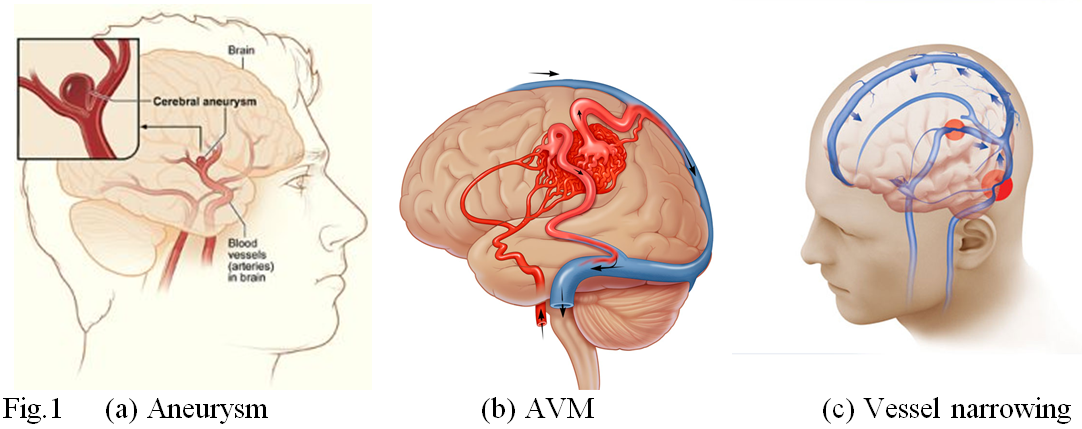Probleemstelling:
A cerebral aneurysm is a blood vessel anomaly (abnormality) in the brain where the blood vessels are dilated (widened) (see Fig 1a). It presents a great health risk because it has a high probability of hemorrhage (it can burst and cause stroke, i.e., bleeding of brain blood vessels). Another such anomaly is a cerebral Arteriovenous Malformation (AVM), which takes place at the direct connection between arteries and veins (see Fig 1b), causing the vessels to intertwine (i.e., to make a bundle). Aneurysms and AVMs are often found together in the same blood vessel system.
To prevent bleeding, embolization (a procedure to insert glue and coils into the aneurysm/AVM using a catheter to prevent it from bursting) is performed. To aid the embolization procedure, image segmentation (automatic detection of blood vessels in medical images) and skeletonization (extracting centerlines of blood vessels) are used to separate regions of AVMs and guide the catheter through the blood vessel system:
https://telin.ugent.be/~dbabin/Demo_WaVelocity/100_00_Other__AVM.mp4
The problem is that these methods are not able to segment (“locate”) the small regions of aneurysms and AVMs, which are equally important in surgical practice as the large anomalies.

